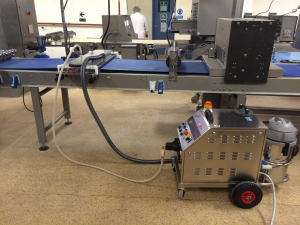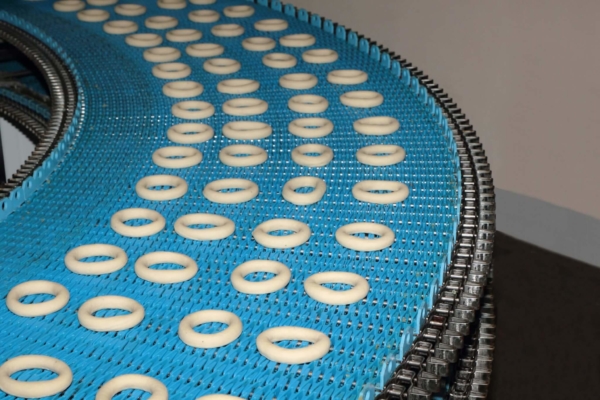 We’ve been asked numerous times “what’s the best method for belt cleaning?”
We’ve been asked numerous times “what’s the best method for belt cleaning?”
People are wanting a better cleaning performance, a better overall result and cleaning standard, and generally want to use less labour to get the job done in a shorter time.
Lots of time is taken to clean belts, it is a very labour intensive process. Cleaning is often done when there is a changeover of product, or a change from one type of product to another when it is essential to clean, especially in the case of allergens. The current method of cleaning belts generally seems to be to remove the entire belt, taking it into a wash room where cleaning can be carried out and the underside of the belts can be cleaned properly, along with the rollers and support mechanisms. This all creates a lot of down time. No belts mean no processing. Then there’s the actual cleaning of the belts themselves, scouring pads and scrapers are often used to remove stuck on soiling and consequently there’s a lot of belt damage done. This is especially so with some of the new belt materials, which are great for the actual job they are designed to do, but very expensive if they are being damaged.
Are there solutions for these problems?
Yes – there are. The first option is to have a rotating bar on a belt and use medium pressure potable water, which is higher pressure than the standard factory pressure and uses a lot less water than most current processes. If you’re using mains pressure to clean your belts, this can be automated very easily to use a lot less water than with your standard wash down hose. The main benefits of this system are that it’s one of the lowest cost systems for automated belt cleaning, it saves labour, gets great results compared to manual belt cleaning and can clean the underside and the face of the belt at the same time. You also have the option to foam chemical onto the belts to give good dwell time. Another option with this system is you can use the chemical technology of thin film cleaners, which cling to the belt without foaming giving very good dwell time for the chemical and letting it do its job.

Then on top of that there’s obviously the manual cleaning of all the belt supports, rollers and frames. There’s definitely improvements on the standard ¾” wash down hose that are used by factories. There are lots smarter ways of cleaning supports, rollers and mechanisms in a far shorter time.
If you are interested in getting more information on cleaning the belts in your facility please click on the button below, send us an email and we can get someone in touch with you to help with the best solution for your particular environment.


